You may wonder why the hoovering yellow and black insect is surely attracted by your sweet lemonade while invading your picnic in the whirl of the summer. That is because these annoying and sometimes dangerous cousins of the honeybee enjoy pleasant weather and sugar.
But what about light? Are Wasps Attracted to Light?
As a general rule, wasps are attracted to light. Houses are good locations for wasps nests, as they are sources of light at night. If wasps are around your lights at night, likely, there’s a nest close by. Similarly, wasps in your house are attracted to the sunlight coming into your windows.
Wasps build their nests close to homes so their interactions with human beings are inevitable.
Read on to discover the types of lights that draw them, how to trace their nests, how to get rid of them, and much more.
Why Are Wasps Attracted To Light?
Wasps are attracted to light due to the compound eyes which are designed to see the world in a disparate way. They are attracted to most colors apart from red. Bright light to them may also resemble a possible source of food, hence the attraction.
They are also drawn in by the heat from the light sources. However, getting too close to the light source may be harmful to them and may get burnt in the process. All wasps are attracted to light at night.
There are some species that are nocturnal such as European hornets and Apoica wasps and prefer foraging at night.
Are Wasps Attracted To Artificial Light?
Wasps are attracted to most light sources like porch lights, light bulbs, downlights, and garden lights without preference to incandescent, fluorescent, or LED light sources.
However, wasps typically keep away from heat sources even if they radiate light. This includes open campfires, candles, or wood and gas-fired BBQs.
Sometimes, wasps are mistaken for bees if they are seen flying around light sources. However, bees are less likely to leave the hive after dark. This is because they don’t have the same exposure to artificial light sources because they are in the hive whereas wasps are on exposed nests and therefore exposed to external light sources.
For more on the differences between wasps nests and beehives, we have written another article. Check it out if you would like, Wasps Nest Vs Beehive. How Different Are They, Really?
Understanding How Wasps See
Wasps like bees have five eyes. Wasps have two compound eyes consisting of individual parts called ommatidia. They also have another set of three simple eyes known as ocelli.
Each compound eye has thousands of facets that help them to see shapes and colors. They see high frequencies of light and can see within frequencies outside the human-visible spectrum.
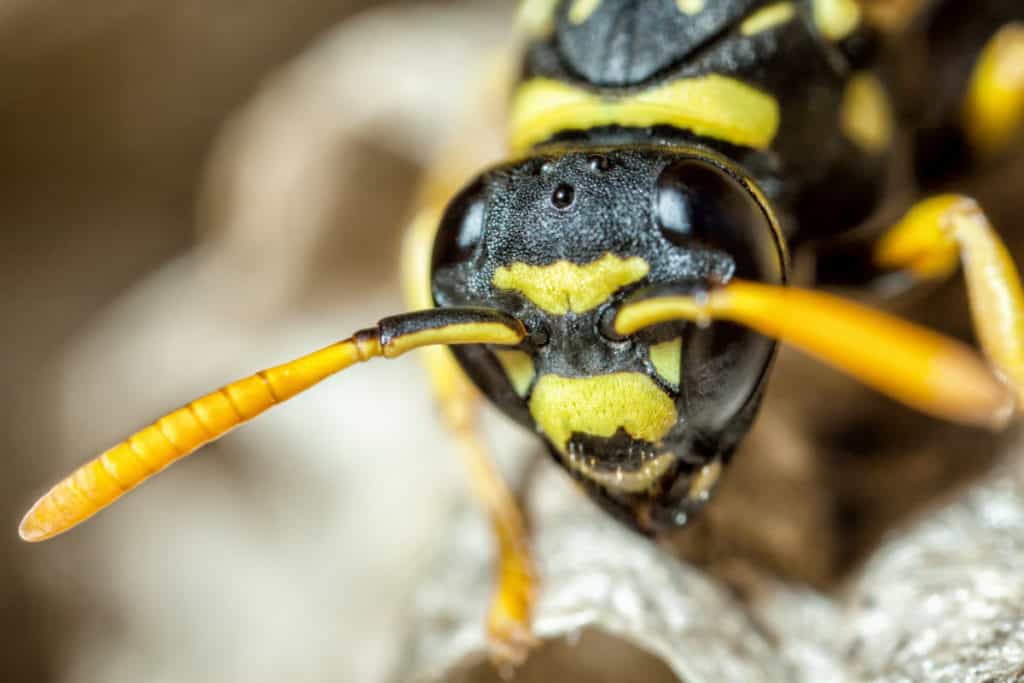
Like honey bees, they can detect ultraviolet light, which helps them to get nectar from flowers. Amazingly, those insects that can see ultraviolet ranges cannot detect red light or reddish wavelengths.
The simple eyes assist them to distinguish light and dark. While the human eyes respond to wavelengths between 380 to 750 nanometers, wasps cannot see wavelengths above 600 nanometers, where red color lies.
Apart From Light, What Else Attracts Wasps Into Your Home?
Ceilings and Overhangs
Porch ceilings and overhangs are ideal nesting spots for wasps. They mostly choose a corner spot where the nest will be more secure.
Weathered Wood
Paper wasps, one of the most common species, construct their nests using wood fiber. Weathered wood provides a construction resource to build their nest. The queen wasp scraps fiber from the wood materials and chews it to mix with saliva to make paper pulp. She then spits it at the construction site, shapes it, and builds a nest.
Wasps mostly build nests near openings that lead to your house. For instance, it can be located near a door that is open to the outside or a widow with a damaged screen. They also construct within attic spaces or wall voids.
Food Supply
Wasps help to control the insect’s population by feeding on other bugs. Unfortunately, they are also attracted to leftover food like meat from BBQs or rotting fruit in your food scrap. Wasp will even get into soda cans chasing the sugary dregs left in the bottom or on the rim of the can.
If they choose your house as a home, probably there is plenty of food for them.
Access to Indoor Shelter
If a queen wasp overwinters in your house, she may start to build a nest in the areas we have discussed.
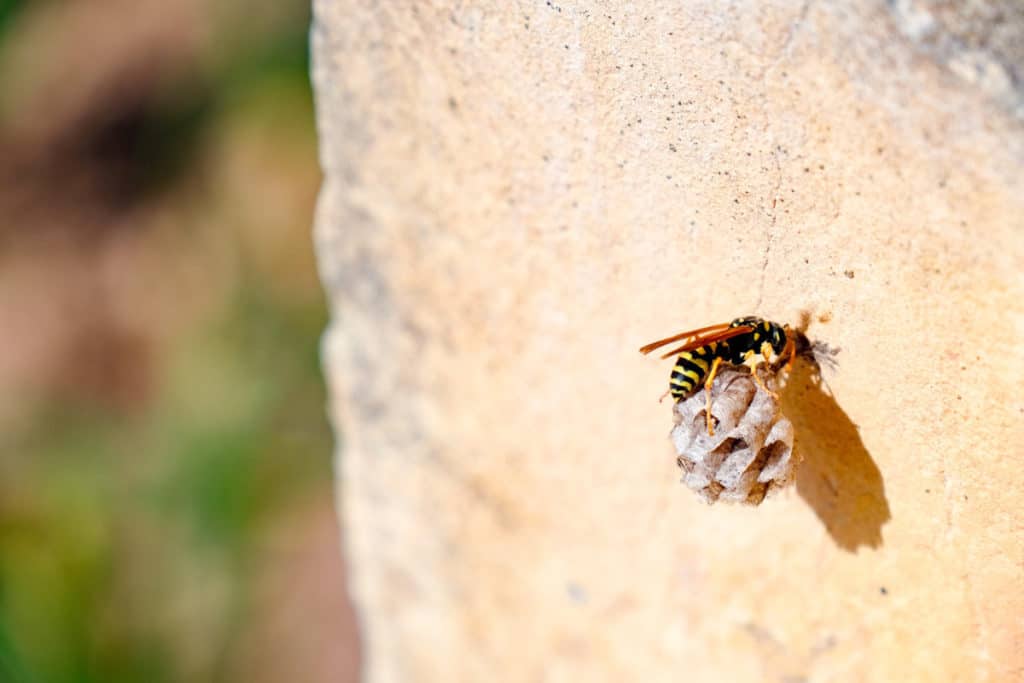
How To Make Your House Less Appealing To Wasps
Regular Pest Control
Consistent pest control in and around your house will minimize the number of insects that wasps can consume. If there is not
Keep Trash Away From Your Home
Wasps forage for food in trash containers and usually enjoy consuming garbage with protein-rich debris. You can cover the garbage bins to cut off their food supply or keep it away.
Clean Up Areas Around Fruit Trees
Towards the end of summer, their diet changes from proteins to sugary substances. They love feeding on fallen fruits, and it is advisable to clean up the areas.
Put Off Floral Décor From Your Home
They are naturally attracted to bright floral prints, so it is good to minimize them.
Limit Outdoor Water Resources
Like other insects and animals, wasps require water. It is good to get rid of areas where water may stand. It is also crucial for the control of mosquitoes.
Do Wasps Play Any Role in the Ecosystem?
Pollination
A few species of wasps help in the pollination of crops. They do not possess the fur-like covering as bees do, and pollen does not stick to them well. However, even with the absence of hairs, they transport pollen efficiently for pollination to various plant species. For instance, fig wasps are the only pollinators of about 1000 species of figs. They play a vital role in the survival of the host plants.
Wondering if wasps also make honey? Check out this article we have written for the answers, Do Wasps Make Honey?
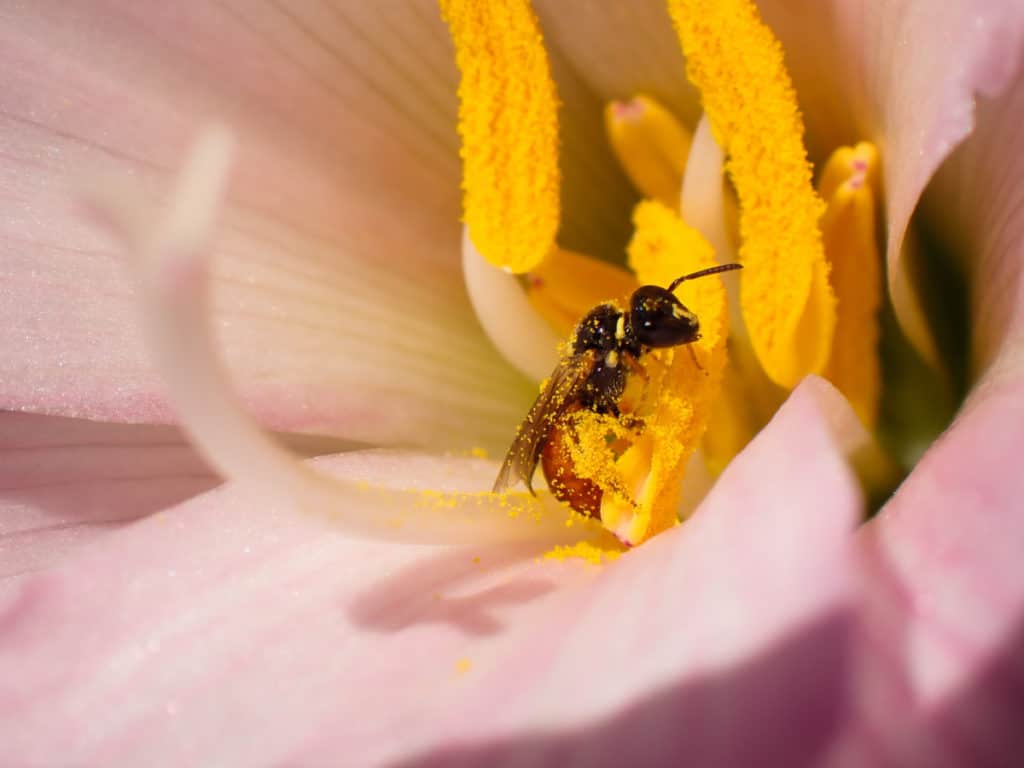
Natural Pest Control
Wasps help in keeping the ecosystem balanced by preying on insects such as caterpillars, aphids, greenflies, and spiders. Some of them chop their prey into pieces and carry it back to the nest to feed the larvae. Parasitic wasps serve as a natural biocontrol of insect pests by laying eggs on their inactive hosts (eggs or pupa). As the wasps develop, they feed on the hosts.
For a complete guide to the diets of wasps, you might be interested in checking out this article we have written, What Do Wasps Eat?
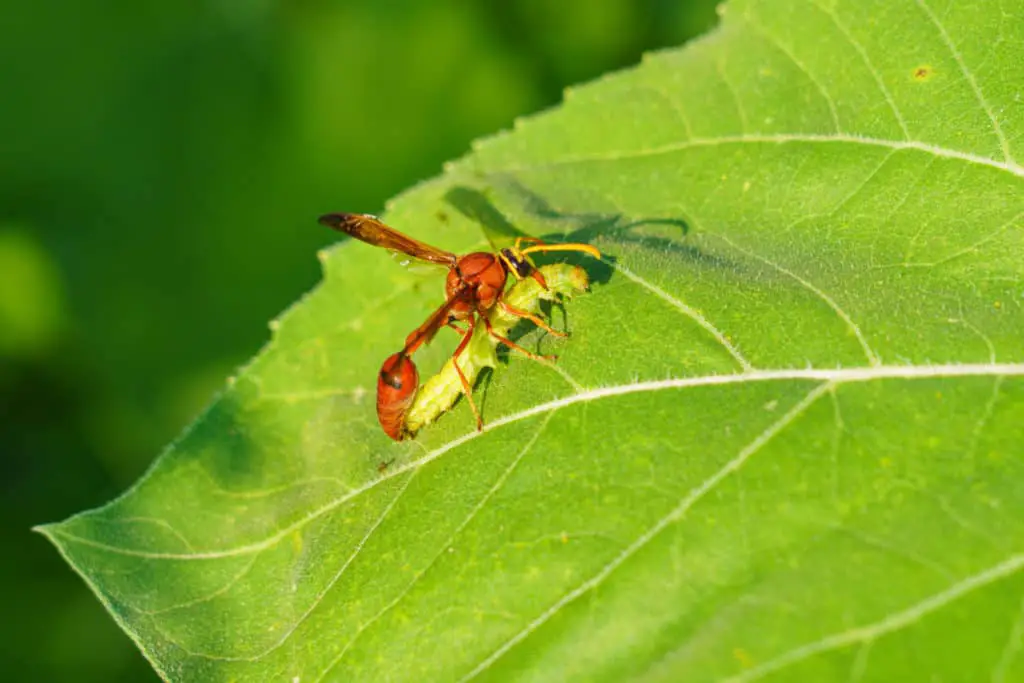
How To Find Wasp Nests
To locate a wasp nest, firstly check the insect from afar and see the direction it flies. You can lure the wasps by leaving some food strategically, such as pet food, before following cautiously back to the direction of their nest. You can also take a close look at any holes to which they may be crawling too.
Possible locations to find the nest includes beneath window sills, attached to trees or bushes, hanging within a building, and so on. Be sure to check the unsealed openings where they may be gaining access.
What Should You Do When You See A Wasp In Your House?
Trying to strike a solitary wasp is most likely asking for trouble. They may sting you leaving a chemical odor calling for backup, and you can end up being attacked by a swarm. So, leaving them alone is a good idea.
If you leave them alone they will usually make their way to a window as they are attracted to the sunlight.
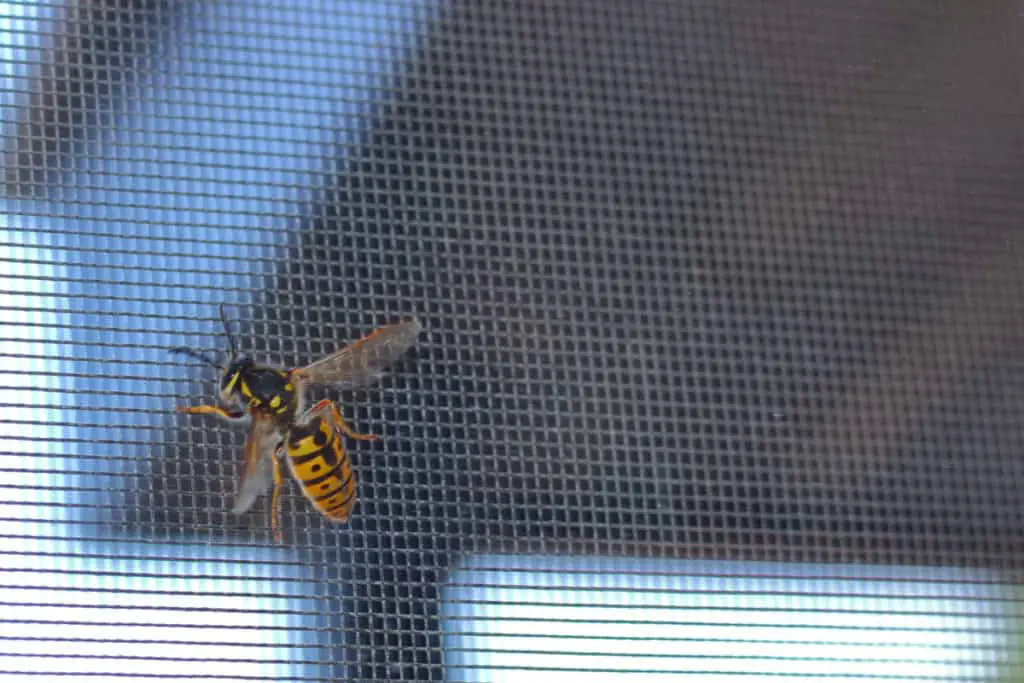
You will often find wasps dead on window sills as they have attracted to the light coming in the window, relentlessly been flying up and down until they run out of energy.
Are Wasps Likely to Sting You?
Wasps sting humans when they feel threatened. Whilst it is their defense mechanism they also utilize it to catch prey. It is worth noting that constant waving of hands to get rid of them makes them more provoked.
Are you wondering if you can outrun a wasp? Find the answers in this article we have written, How Fast Can Wasps Fly And Can You Outrun Them?
When they land on you, stay still and let them fly off. If you try to brush them off, most probably, they will sting you. Unlike honey bees, wasps do not die after stinging. They can even sting several times in a row.
They have smooth stingers that they efficiently pull out of the skin after stinging. They are also capable of making more venom once it runs out.
Do Wasps Pose Any Danger While in the House?
If they build a nest in your house, it may result in an infestation that puts the household at risk of a severe stinging episode. They also damage walls and ceilings. Overwintering wasps rarely become an infestation and are hardly noticed.
We have written a whole article about this topic. If you are interested, it is called, Are Wasps Dangerous?
When Are You Likely to See Wasps?
Wasps start to emerge in late spring. It is the time that the queen starts emerging from hibernation. The queen rears the first set of workers alone before they can take over the hive duties.
How Do You Get Rid Of Wasps Nests?
After locating the wasps home, here is what you can do to eradicate them.
Nest Drenching
You can use a pesticide specially formulated for wasps and ensure you saturate the nest entirely. Depending on its location, you can use hand-held sprays or a long-nozzle sprayer. Make sure you destroy the nest after killing the wasps.
Nest Dusting
This method entails using a powdered insecticide to cover the nest and eventually kill the whole colony. It is safer than nest drenching since you apply the powder and vanish. However, it requires re-application and may take a couple of days of the week to get rid of the whole colony.
DIY Methods
You can also formulate your homemade remedies if you don’t want to use insecticides. Some of the easiest ways include placing strong-smelling herbs such as thyme, spearmint, eucalyptus, or citronella around your backyard or near windows. Alternatively, you can make a wasp-repellent spray using essential oils such as clove, lemongrass, and geranium oils.
Call A Professional
If you or a member of your family is allergic to wasp’s venom, it is advisable to use professional help. It also applies when a nest is in a hard-to-reach place.
The Wrap Up
Wasps are famed for disrupting summer picnics. Apart from being annoying, you may end up with a painful sting that reminds you they are close relatives of bees. Their presence around light sources at night is an indication of an infestation. Besides their painful sting, they also pose a deadly risk to allergic people.
If you are concerned about bugs being attracted to your light at home it might be worth checking out these other related articles we have written:
Are Spiders Attracted to Light?
Where Do Bumblebees Go At Night?
Sources
https://www.nhm.ac.uk/discover/what-do-wasps-do.html
https://ucanr.edu/sites/PollenNation/Meet_The_Pollinators/Wasps/
https://www.fs.fed.us/wildflowers/pollinators/animals/wasps.shtml
https://www.bbc.com/news/science-environment-41042948
https://www.orkin.com/stinging-pests/wasps/wasp-infestations
http://elimassagelagos.com/journal/archive.php?tag=are-wasps-attracted-to-light-d0b1ac
https://en.wikipedia.org/wiki/Wasp
https://en.wikipedia.org/wiki/Characteristics_of_common_wasps_and_bees#cite_note-18
